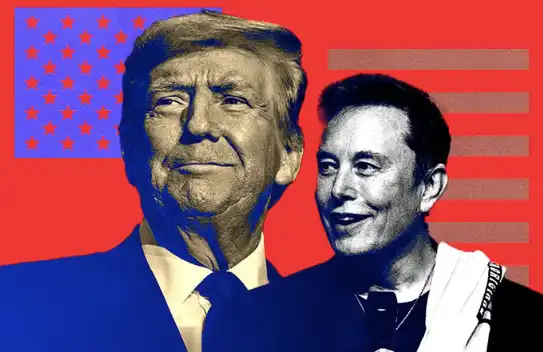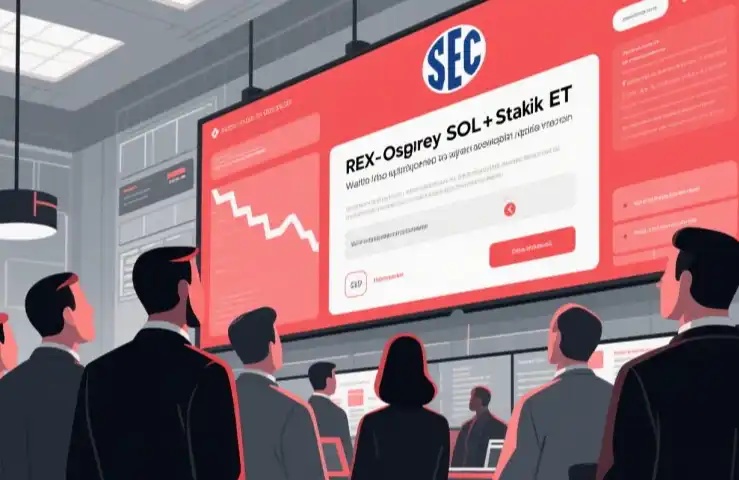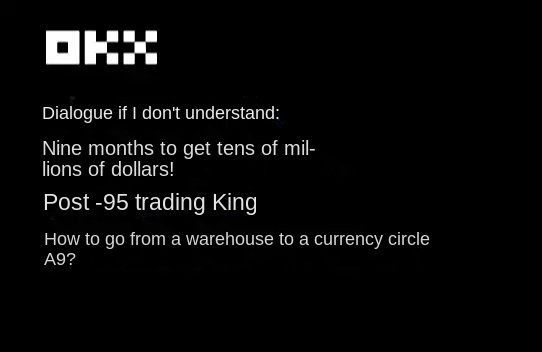Must-read articles on DAO governance and NFT platform
Original title: "Locust Selection (2): DAO Governance and NFT Platform Must-Read Articles"
Original source: BuidlerDAO
1. Demystifying BanklessDAO's GSE @FrankMiao
DAO has obvious "responsibility dilution" Problem: We take it for granted that "governance" is everyone's responsibility, but in fact, often no one thinks that "governance" is their own responsibility. This is also a profound lesson in the first 8 months of BanklessDAO's establishment (let's call it the governance 1.0 period )。
During the Governance 2.0 period, the GSE (Governance Solution Engineer) election was adopted The characteristics of 5 people are selected: 1. The community recognizes doers; 2. Know how to solve problems, and the Web2 industry is also a veteran; 3. Members have complementary experiences. Therefore, each of the 5 people has their own specialties: lawyers, organizational design, DAO operations, and DAO theory Research, Economics.
GSE has been held twice a week for the past 7 months Yes, everyone claims their own tasks. While promoting the optimization of DAO governance, GSE members also frequently appear in various community projects and deliver charter and financial research reports. But the community’s expectations for GSE are far more than a " BanklessDAO Charter and Community Handbook", GSE needs to take the lead to gather the wisdom of contributors and stimulate (education) community enthusiasm for participation in governance.
Ideas
We recommend Shawn’s two articles together. The previous one has been widely circulated in the industry. In a word: the ceiling of the CEO is the ceiling of the organization. Any healthy growth of the organization requires far-sighted organizers and leaders, and at the same time locks the power of the leader in a cage. Bankless brings full inspiration to everyone: the need There are teams (executives) who shoulder the pressure of organizational development, constrain the directions that are too loose and have no commercial significance, and lead the community to do things that do not see short-term incentive effects (such as regulations, talent building).
< br>
Original link:
https://shawn.mirror.xyz/AVk0b8grdXbgKpJfnrQI1HoP2T2LWFywXKu0zkrSSNw
< p>https://shawn.mirror.xyz/YjQEvL76aNUqxjCmQ1w2zipkjP3k4J4uPqZrpWe5l9I2. Understand Orange in one article DAO Governance Method and Investment Layout @Aviv
Orange DAO is a collective of Y Combinator alumni dedicated to supporting Web3 startups. Orange DAO will help startups apply and get accepted to Y Combinator, provide them with pre- and post-YC funding, while helping guide their leadership and recruit talent, and acquire clients. Governance and Operations of the DAO: Orange DAO is built on common interests governed by open and secure software that will facilitate the governance of the DAO.
In order to assist the operation of the DAO and safeguard its integrity and assets: Orange DAO establishes at least three committee. The three standing committees are: Management Committee, Development Committee, Finance Department. Each committee will consist of at least three DAO members. To ensure separation of powers, no member may serve on more than one committee during any term. Committee members may serve on a subcommittee of the same committee, but not on a subcommittee of another committee. The DAO allows members to explicitly delegate their voting power to another member, and to revoke delegation at any time for any reason. DAO can establish multiple types of tokens through proposals, but only ORANGE governance tokens will be used for voting on proposals.
Other tokens will not count towards quorum or vote. Orange DAO invests in startups but is not itself a fund. The DAO currently invests as an LP of select funds that invest in early-stage cryptocurrency startups. DAOs can also make direct or indirect investments by forming new fund entities or co-investing. Orange DAO currently has three fund investment methods.
ideas
Orange As a DAO organization composed of Y Combinator alumni, DAO's operation and governance methods are worth learning from other DAOs involved in the investment field. Orange DAO allows us to see a new model of future investment. Its YC Alumni S21 Index Fund, Orange Crypto Fund I, and Future Funds fund investment methods have well promoted the healthy and sustainable development of DAO. And the design of the three committees of Orange DAO ensures the separation of power and fair decision-making. Orange DAO is currently a relatively well-developed investment DAO. It is of great reference value to understand the governance method and investment layout of Orange DAO to grasp the future of the investment field of Web3.0.
Original link:
https://mp.weixin.qq .com/s/1lysqI69HYUW38VtN1iHzg
3. So far, DAO What do you rely on to make a profit? @spinach spinach!
In this highly financialized field, most DAOs are There is no profit, which is a huge paradox. That doesn't mean they'll never be profitable, or that they can't operate as efficient businesses. But it does mean that we need to shed some old notions of what it means to be a successful business and what a DAO needs to support its core team. It seems that the DAO that uses Token as its own product and only relies on "Token rise" to pay contributors is outdated.
But when it comes to other funding models, DAOs get bogged down. They haven't really launched a product (yet). They sometimes offer services, but that's mostly within Web3. They don't talk much about business strategy or profits and losses. It often feels like we live in a different reality than how businesses operate. But DAOs will be a very short-lived experiment if we don't get serious about making money.
ideas
DAO Need to find a way for the DAO to make enough money doing X to pay the DAO's core team Y. There is a common idea in Web2 that a visionary CEO is necessary for a company to succeed. Steve Jobs and Apple, Bill Gates and Microsoft, Elon Musk and Tesla, Mark Zuckerberg and Facebook are all visionaries touted as the best of the best. Business leaders in web2 are skeptical of DAOs because DAOs lack that singular vision.
To me, a DAO is not leaderless: there are multiple and experienced leaders. These various leaders can set the tone for the direction of the organization, rather than being a figurehead. And, as long as they are united by the mission, rather than divided by their understanding of the mission, these leaders can even lead a DAO to a larger mission than a single leader can lead. Linking this to profitability, the key is for a DAO to have a real purpose around which leaders can rally around.
If there are many self-directed purposes competing for resources, then the DAO will never will make enough money to continue paying its core team. Although we are in an ownership economy where users gain unprecedented power and ownership, DAOs need to balance this with making enough money to take care of their core team. If we treated every DAO as a public good, taking care of the core team would never happen.
Original link:
https://mp.weixin.qq .com/s/Q8Nnbba2RtRhPLoNbW-I1g
4. Start community building: two concepts you have to master@猫老大
< br>
What exactly is a community? In this article, the author emphasizes the growing importance of the community to the enterprise, simplifies his many years of experience in community building, and summarizes two key concepts—— community quadrant and community funnel, and combines multiple real cases to illustrate Detailed explanation. The author highlights the characteristics and importance of the "evangelist" (fans) group in the product user group, and introduces how to identify, attract, cultivate, and transform more loyal fans step by step. The writing is vivid and concise, and it is very helpful for community building at any stage. Everyone has spleen benefits.
ideas
No matter in which field, from real consumer brands, to web2.0 fan economy, to today's web3.0 DAO organization, community building is inseparable. The community quadrant and community funnel emphasized in this article, combined with Case thinking can bring inspiration.
Original link:
https ://mirror.xyz/seedao.eth/a0xXZjXy7CGus5phgVOS4qx0nTYsIDj5mfepFbaeTpw
5. a16z: How to avoid DAO Governance attack?@Aviv
Indivisibility challenge: Token Allocated market mechanisms that fail to distinguish between users who want to make valuable contributions to the project and attackers who place a high value on disrupting or otherwise controlling the project. Protocol designers are faced with exposing decentralized governance and protecting their systems from attempts to exploit The fundamental trade-off between attackers attacking the governance mechanism. The high liquidity market of Token makes it easier for attackers to obtain enough rights and interests to destroy the security of the network.
Framework for Assessing and Addressing Vulnerabilities: Attacker's Interest = Value of Attack - Cost of Voting Power - Cost of Performing Attack
Reduce the value of the attack
Designers can limit the value of attacks by limiting the scope of governance functions. If governance only includes the power to change certain parameters in the project (such as the interest rate of a loan agreement), then the scope of potential attacks is much wider than governance allows for governance intelligence. The contract is much narrower for overall control.
Increases the cost of obtaining voting rights
Project parties can also take steps to make it more difficult to obtain the voting rights required for attacks. This can be achieved through incentivized staking, or by giving Tokens an independent value beyond pure governance. The higher the value Token holders get, the more they The more you can align with the success of the project. Due to the benefits of independent Tokens, current holders will be less willing to sell, which will increase the market price. However, although the attacker must pay a higher price, the existence of independent functions does not It does not increase the value of the attacker to obtain Token.
Increasing the cost of performing an attack
In addition to increasing the cost of voting power, we can also Introduces friction to make it harder for attackers to exercise voting rights even after obtaining tokens. For example, designers may require some kind of user authentication to participate in voting, such as KYC checks or reputation score thresholds. Or increase the difficulty for attackers to propose malicious proposals. For example, some projects have timelock settings, so tokens cannot be used to vote for a period of time after the exchange.
Summary: The project must strike a balance that allows some degree of openness to community changes , while not allowing malicious proposals to slip through the cracks. This solution is somewhere between fully decentralized governance and sacrificing some decentralization for the overall health of the protocol.
ideas
DAO It is an important organizational form in the Web3.0 era, and the decentralization of DAO attracts more and more people to participate in it. DAO's decentralized governance is often issued by issuing exchangeable and tradable native Tokens. This governance model has both advantages and disadvantages. By issuing governance tokens, DAO has lowered the barriers to entry and pushed DAO to continue breaking the circle. But at the same time, because the issued governance tokens are exchangeable, there are potential governance attacks. Attackers may launch Sybil attacks for their own benefit, and due to the decentralized nature of the DAO, all attacks are within the protocol. DAO designers must guard against more and more governance attacks. The evaluation framework in this paper provides a relatively clear prevention guide for project designers. DAOs can choose their own governance path through the evaluation framework.
In addition, SBT, which has become more and more popular recently, may be the solution to the existing Governance attack is a new idea. The project party issues SBT to allow members of the organization to exercise their own governance authority. SBT is bound to the identity of the administrator and represents the authority of the administrator. At the same time, SBT can also prevent malicious proposals from hackers. By airdropping SBT, the project party can also achieve better decentralization and hand over voting rights to suitable people.
Original link:
https://mp.weixin.qq .com/s/GKbTYXqH5bVUbwRNXSeprg/
https://mp.weixin.qq.com/s/GuxpUuYjqyeE9gA3olJ49g
6. New NFT scam: "NFT Pixiu Disk" @陈剑Jason that can be listed on the OpenSea list
This article introduces the recent deceptive methods in the NFT field. The project party uses the contract to leave a back door to forcibly control the floor price + left-handed and right-handed to increase the transaction volume. Let yourself dominate the Opensea, so as to lure a large number of people into it.
Thinking
Currently In addition to fundamental analysis such as team background and project Roadmap, the most directly quantifiable indicators for making purchase decisions on NFT projects are floor price and transaction volume. Many people will be confused about the floor price. How can the project party decide the price for thousands of people to place orders?
In fact, this involves a very controversial operation, the contract backdoor, which I wrote before I think there is no lower limit for a project called Infinite.nft in this article. It uses the slogan that paper hands should be damned. There is a back door in the contract. As long as the price of the pending order is lower than 1 ETH, it will be destroyed, thereby forcibly controlling the floor price, but It still attracts a lot of people to buy, because the holders are happy to see the floor price of their NFT projects rise, and they even think that this kind of project is a good project party, a good father to protect their Holder leeks, and there are even People say that everyone has made it clear that as long as it is less than 1 ETH, it will be destroyed. One is willing to fight and the other is willing to suffer, and they are desperately maintaining the project party.
First of all, regardless of whether the rules have been announced in advance, from the perspective of NFT asset attributes, I buy After that, it is my personal assets. Why do you want to destroy my NFT under some slogans that seem to be Guangweizheng? Secondly, everyone’s consensus is that the blockchain cannot be modified, and asset rights are confirmed. This kind of blatant destruction of other people’s NFTs that do not meet their own wishes is completely trampling on the spirit of the blockchain. Since Infinite.nft arrogantly set a precedent for low-price destruction, we can see more and more project parties doing this kind of operation later, until some project parties began to use this kind of operation to cheat money openly. It is true that the Holder who bought this NFT is a vested interest, but for this little benefit, it really shouldn't have made such a bad negative impact on the industry.
Original link:
https://www.theblockbeats.info /news/31484
7. Wing has risen 10 times in 2 days @will
Wing is a DeFi cross-chain lending platform developed and operated by the Ontology project team. Wing introduces a non-full collateralized lending mechanism based on DID credit, similar to the FICO credit rating system of the US banking system.
On July 1st, Wing launched the NFT lending pool, which currently supports 6 lending pools including BAYC Blue chip NFT project. The NFT pool adopts a peer-to-pool lending model. Lenders can provide liquidity by depositing ETH in the lending pool, and obtain ETH interest and pWingToken rewards. Wing also launched an insurance pool to protect the asset security of NFT lenders and the entire project, differentiated from other encrypted lending platforms. However, the current liquidity in the insurance pool is less than $80,000, accounting for only 2.51% of the NFT lending pool, which is still a long way from the goal of covering the entire pool.
Ideas
Current The NFT lending market is still in its infancy. At present, the lending market is mainly divided into three types: point-to-point, point-to-multiple (point-to-pool) and CDP lending. Wing is a typical point-to-pool lending platform. Compared with other point-to-pool Lending agreement, Wing's advantage lies in its non-full mortgage loan mechanism based on DID credit. The better the credit, the lower the collateral value required by the platform, and users who repay on time can also enjoy lower borrowing rates. In addition, Wing launched an insurance pool to protect the asset security of NFT lenders and the entire project, which differentiates it from other encrypted lending platforms. Common peer-to-pool trading platform BendDAO offers borrowers 48-hour liquidation protection, while Bailout limits loan terms to 30 days to ensure solvency.
Less than a month after Wing launched the NFT lending pool, from the 28th to the 29th On the 28th, Wing rose 10 times. After the 30th, the price continued to cut in half. The current price is 14.5, which is still more than 2 times the increase from the 28th. The data on the chain shows that the big giant whale has bought for two consecutive days. It is speculated that the number one giant whale should have some important information, and there may be further performance in the future.
Original link:
https://mp.weixin.qq .com/s/eRfmG1Kiq3F7zb9PeENQDQ
8. Under the escrow turmoil, is Magic Eden’s Solana NFT transaction throne difficult to guarantee? @FrankMiao
With the rise of Magic Eden, the Solana NFT community of members (both creators and collectors) are increasingly concerned that the platform has become too centralized as it grows. Magic Eden escrows all listed assets, instead of allowing them to stay in the user's own wallet, the user's NFT is kept in the escrow wallet through the market smart contract.
For some players in the Web3 space, the overall conversation around Magic Eden has been about Centralized versus decentralized, including how major players in the space should approach issues such as asset custody, open source code, and composability of blockchain assets and protocols. Between continuing to use third-party hosting and making API-centric changes, Magic Eden's recent decision hasn't been for everyone.
Ideas
None Whether the smart contract in the hosting mode is safe or not requires the judgment of technical experts. Personally, I think that with the frequent occurrence of hacking incidents this month, the market’s calls for security have become stronger, and the decentralized uncustodial model may not be the best solution in the short term; the way Magic Eden provides API keys to developers, It can better protect the security of assets and be responsible for user losses. But in the long run, API keys are difficult to solve the problem of cross-platform transactions, and a secure cross-platform non-custodial market will become increasingly important.
Original link:
https://www.odaily.news /post/5180681
9. Immutable X: From blockchain game infrastructure to a standardized NFT distribution platform@will
1. Product mechanism
High-throughput Validium solution: in terms of capacity expansion , IMX chose the Validium data availability solution with lower cost and higher throughput to achieve further performance improvement.
The allocation of handling fees for value taxation: The IMX team believes that valuable flow behaviors should be used to subsidize valueless flow behaviors, so for priced NFT transactions, a uniform tax of 2% will be charged. As for mint and transfer, both are subsidized by the platform, and users can complete them for free.
API-based developer tools: MX allows developers to access services through REST APIs. In this way, developers can complete basic NFT deployment without learning Solidity or smart contracts.
Shared order book mode: In the IMX ecology, shared liquidity enables the seller to place an order in any mall, which can be purchased by the buyer in any mall, and The mall can customize the mall tax rate for buyers or sellers, which is equivalent to automatically aggregating all NFT liquidity through the IMX protocol.
2. Operation Ecology
IMX serves as an NFT function The starting point of the platform is to focus on serving game assets, but the actual operation process also includes various pure NFT projects, and the latter actually account for the majority of transaction volume (~75%).
3. Token Economy
$imx has three functions : Transaction fees, pledge to obtain ecological incentives and governance. In the distribution of $IMX, ~51.74% belongs to ecological development, including user pledge incentives, developer funds, marketing, etc.; 25% belongs to the agreement itself for development and operation; ~14.26% belongs to private placement; 5% is sold in public placement; 4% will be retained by the foundation, which will be used to provide trading platform liquidity, etc.
ideas
IMX The characteristics of IMX are very obvious. What is different from other public chains is that it is very friendly to developers and users. First of all, the policy of minting/transferring NFT consumes 0 fees greatly reduces the threshold for users. In addition, IMX The developer provides a REST API interface, and developers can deploy NFT on IMX without writing smart contracts, which is ideal for projects that focus on the market and focus on development. However, these convenient experiences are exchanged for a certain amount of data security, and the lowering of the threshold also means that it is difficult for IMX to attract high-quality blue-chip NFT projects. Judging from the business data of the past two months, it is more than enough to deduct the Mint / Transfer fee at 2% of the tax rate. How to develop in the future depends on whether there are enough game project parties in the market and the trend of the market.
Original link:
http://www.lianchaguan.com/archives/41845
Original link
Welcome to join the official BlockBeats community:
Telegram Subscription Group: https://t.me/theblockbeats
Telegram Discussion Group: https://t.me/BlockBeats_App
Official Twitter Account: https://twitter.com/BlockBeatsAsia
 Forum
Forum OPRR
OPRR Finance
Finance
 Specials
Specials
 On-chain Eco
On-chain Eco
 Entry
Entry
 Podcasts
Podcasts
 Activities
Activities









